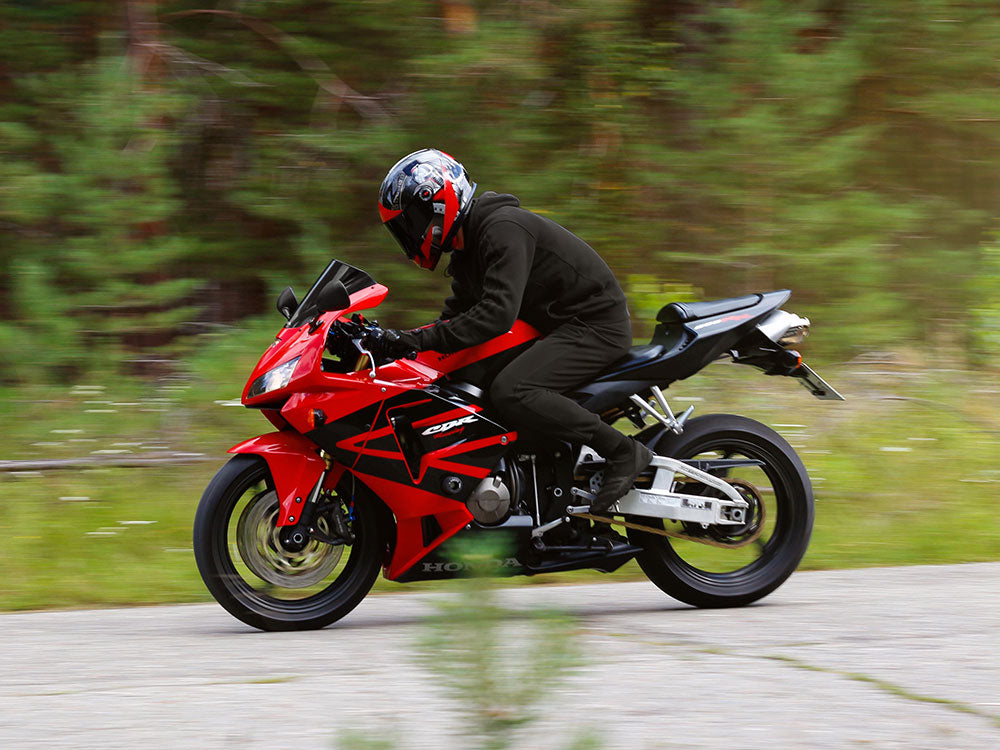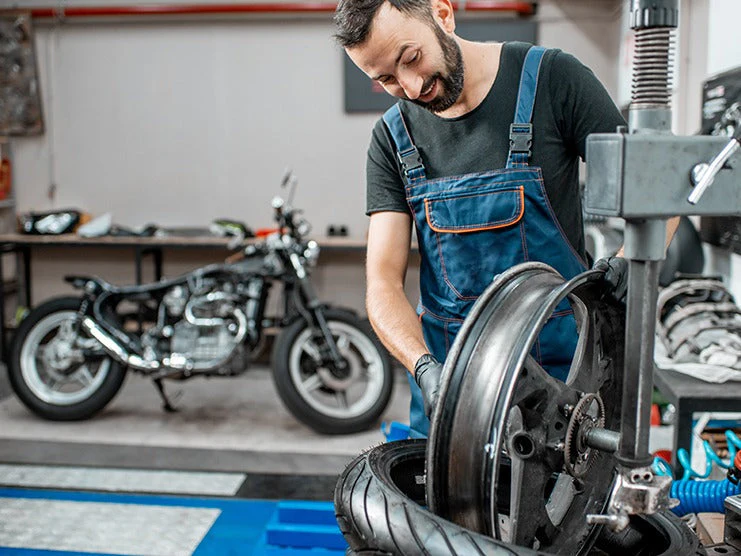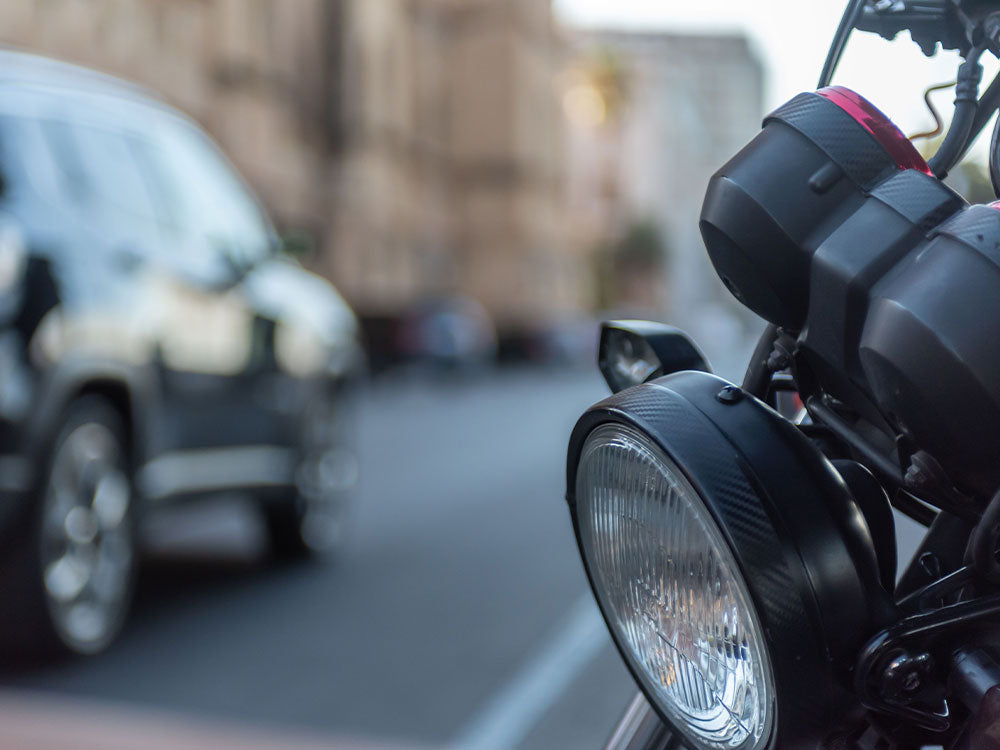Riding motorcycles at high speeds, especially bikes with fairings, can be dangerous since it increases the risk of crashing. This is because a fairing can improve a bike’s aerodynamics and reduce drag. Consequently, a motorcycle that can achieve quick and higher acceleration often is involved in accidents. In addition, some fairings do not produce adequate downforce to ensure good traction and stability, which increases the risk of overturning. This can result in the bike being severely damaged and the rider sustaining injuries.
Even if you don’t ride at high speeds, your bike can still topple over when traveling slowly, which can result in damage and injuries. Since motorcycles with fairings feature plastic bodywork, they can easily get damaged or break, resulting in you paying for an expensive replacement.
Fortunately, there are many aftermarket parts available on the market that offer protection, including crash bars, engine guards, backbusters, rear sets, and engine covers. But for a motorcycle with a fairing, a frame slider is the most important add-on. This article discusses the importance of a frame slider and how it can help you protect your expensive motorcycle fairing.
Table of Content
1. What are Motorcycle Frame Sliders?
A frame slider offers crash protection for sports and standard bikes with or without fairings. They are bolted onto the motorcycle frame near the foot controls or engine block. Frame sliders are impact-resistant and protect the fairing and engine by keeping them off the ground.
Motorcyclists who ride their motorcycles on the asphalt only can benefit from frame sliders. If the bike loses traction when cornering or maneuvering through traffic, a rider will experience a low-side crash. In such a situation, frame sliders will stop your bike from drifting too far on the road by absorbing kinetic energy.
2. How Do Motorcycle Frame Sliders Provide Crash Protection?
A frame slider protrudes outward from the motorcycle chassis. This protrusion is referred to as a puck or bobbin and is made from metal, plastic, or both. Common materials used to build frame sliders include:
- Steel
- Aluminum
- High-Quality Poly-Ethylene Plastic
- Delrin
- Dense Nylon.
The bolts that hold the sliders to the chassis are made from de-embrittled steel, which helps improve shock absorption and keep them from breaking on impact. Once the frame sliders touch the ground, they help reduce friction while the bike travels on the road. Moreover, they help keep the bike from tipping over, prevent it from somersaulting, and keep the bike from hitting other vehicles. However, constant use will cause the frame sliders to become worn out. Depending on your model and the frame slider’s brand, you can get replacement frame slider bobbins that cost between $100-$250.
Without frame sliders, your motorcycle fairing would scratch against the ground and become damaged. If you ride a standard motorcycle, a lightweight stripped-down cruiser, a sport tourer, or a sport bike with a fairing, you will need frame sliders to complete your crash protection kit.
3. How to Choose a Frame Slider for Your Motorcycle?
All motorcycles have different frames and engine designs; therefore, they require model- and brand-specific frame sliders. For example, a Harley Sportster Iron 1200 frame slider would look different from a Ducati Panigale V2 frame slider. Make sure to look for a slider that fits your bike’s model and year, the installation hardware remains secure, and the frame sliders are the correct length for optimal protection. Otherwise, frame sliders will break and cause even more damage to your ride.
3.1 Length - Short vs Long Sliders
If you ride a Supersports bike on freeways and tracks, then use a shorter frame slider. Shorter frame sliders do not lift the bike too much off the ground and reduce the risk of your bike flipping or rolling.
On the other hand, longer frame sliders provide more leverage to the bike on impact and this can cause the bike to roll and flip. Moreover, a longer slider can bend or break the motorcycle’s engine mount bolt or damage the engine mount hole.
3.2 Material - Metal vs Plastic Sliders
Aluminum or steel frame sliders are less prone to wear and tear and only need to be replaced every few years compared to plastic sliders. However, metal sliders produce more friction and can cause the bike to flip over. Also, when a metal frame slider strikes the ground, it transfers more shock load to the frame than plastic sliders.
Unlike metal sliders, plastic sliders (polyethylene or nylon) have a low friction coefficient and slide across the road more easily. Unfortunately, they melt or wear down faster due to the heat generated from friction generated by the sliders scraping against the ground. Though they have to be replaced more frequently, plastic sliders offer better protection.
To get the most out of your motorcycle frame sliders, buy the metal and plastic (aluminum and polyethylene) versions to get the best features of both types of sliders.
3.3 Installation Hardware
Frame sliders are only useful if the installation hardware is strong and flexible. The quality of a slider bolt determines its performance on the road. High-grade bolts between 10-12 or above can absorb the impact but transfer the external force to another component, causing it to break. On the other hand, low-grade bolts between 2-4 or below break upon impact. It is best to choose a medium-grade bolt, preferably between 7-9 for optimal protection.
4. Best Types of Sliders for Optimal Fairing Protection
If you own a motorcycle with a fairing and you want to install protective slides, you may have to modify your bike. Based on the installation process, there are two main types of sliders:
Cut Sliders (Fairing-Mounted)
Cut sliders or fairing-mounted sliders are designed for sports bikes and standard bikes with fairings. They are built to only protect the fairings. Another drawback of cut sliders is that you first have to remove the fairings and drill holes in them to create mounting points for installation. Fairing-mounted sliders are best suited for riders who like to modify their fairings and do not need sliders to provide engine protection.
No Cut Sliders (Engine-Mounted)
No cut sliders, or engine-mounted sliders, offer maximum protection. If you are riding a naked motorcycle, you can easily fasten the slider on the engine. For motorcycles with fairings, you might have to remove the plastic bodywork during installation. No-cut sliders are sturdier because they are directly mounted on the engine and frame.
Plus, they equally distribute the shock of an impact during a crash, which helps protect the fairing, engine, and frame.
The only downside of a no-cut slider is its cantilevered mounting bracket as it may exert additional force on the frame that could damage it.
5. When Should You Not Use a Frame Slider?
Do not use sliders if you ride a dual sport and adventure tourer with or without fairings. They are also not suited for off-roading since they might dig into the gravel and cause your bike to flip over.
6. Takeaway
A frame slider is an essential part if you ride a motorcycle with a fairing. Though they cannot prevent accidents and crashes, they can better protect your bike. When buying frame sliders, make sure you choose ones specifically designed for your motorcycle with the right material, length, and hardware. Also, make sure to consider your riding style and needs before you purchase frame sliders.
Frame sliders keep your expensive fairings and engine components safe, ensuring the peace of mind necessary for a relaxing and enjoyable riding experience.













Leave a comment
All comments are moderated before being published.
This site is protected by hCaptcha and the hCaptcha Privacy Policy and Terms of Service apply.